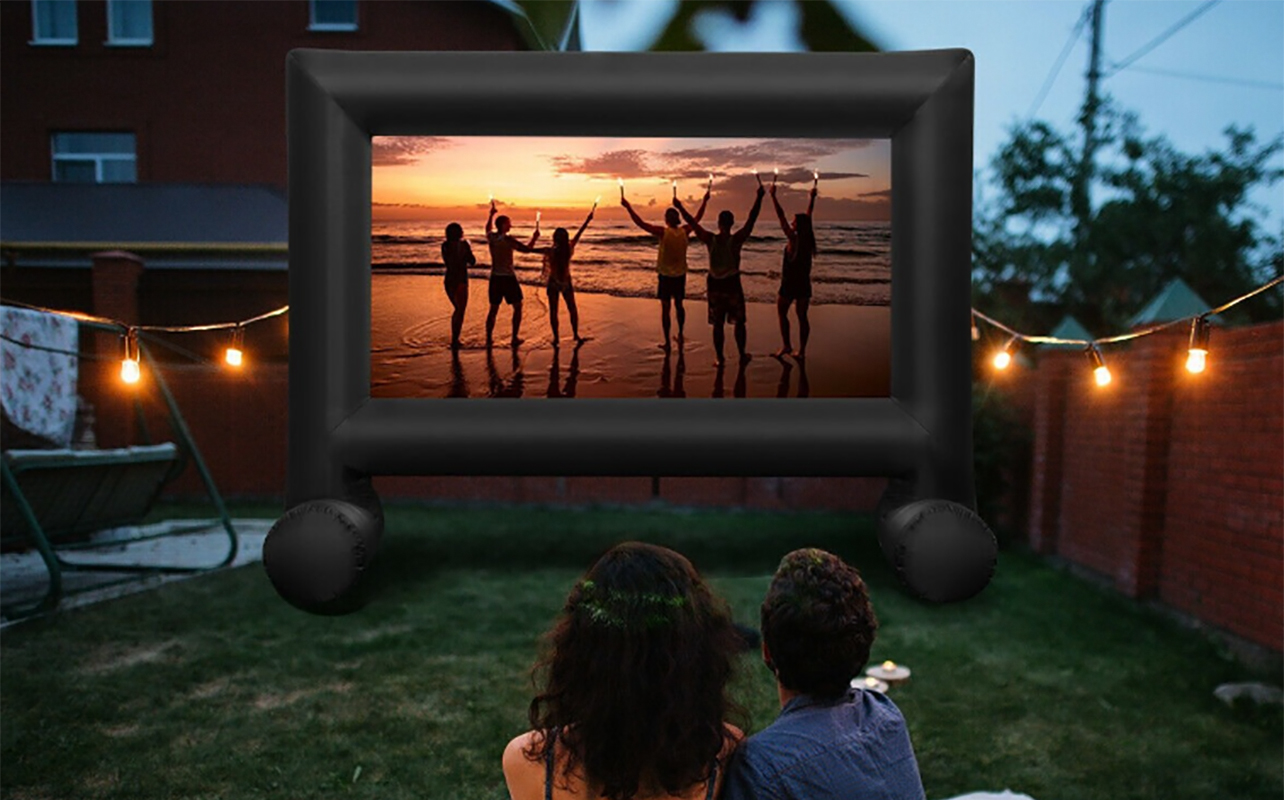
Hosting a backyard movie night or setting up a home theatre? Get a projector with the right brightness to ensure your content looks its best. The tricky part is finding the best lumen level. Manufacturers use different measurement methods, and some numbers are inflated to look impressive. That’s why looking at ANSI lumens, which is the industry-standard brightness measurement, is the safest way to know how bright a projector will look in real life.
This guide will help you understand projector brightness, the difference between ANSI lumens and regular lumens, and how to choose the best lumen level for your space, whether indoors, outdoors, or in daylight.
Understanding projector brightness: lumens, ANSI, and colour
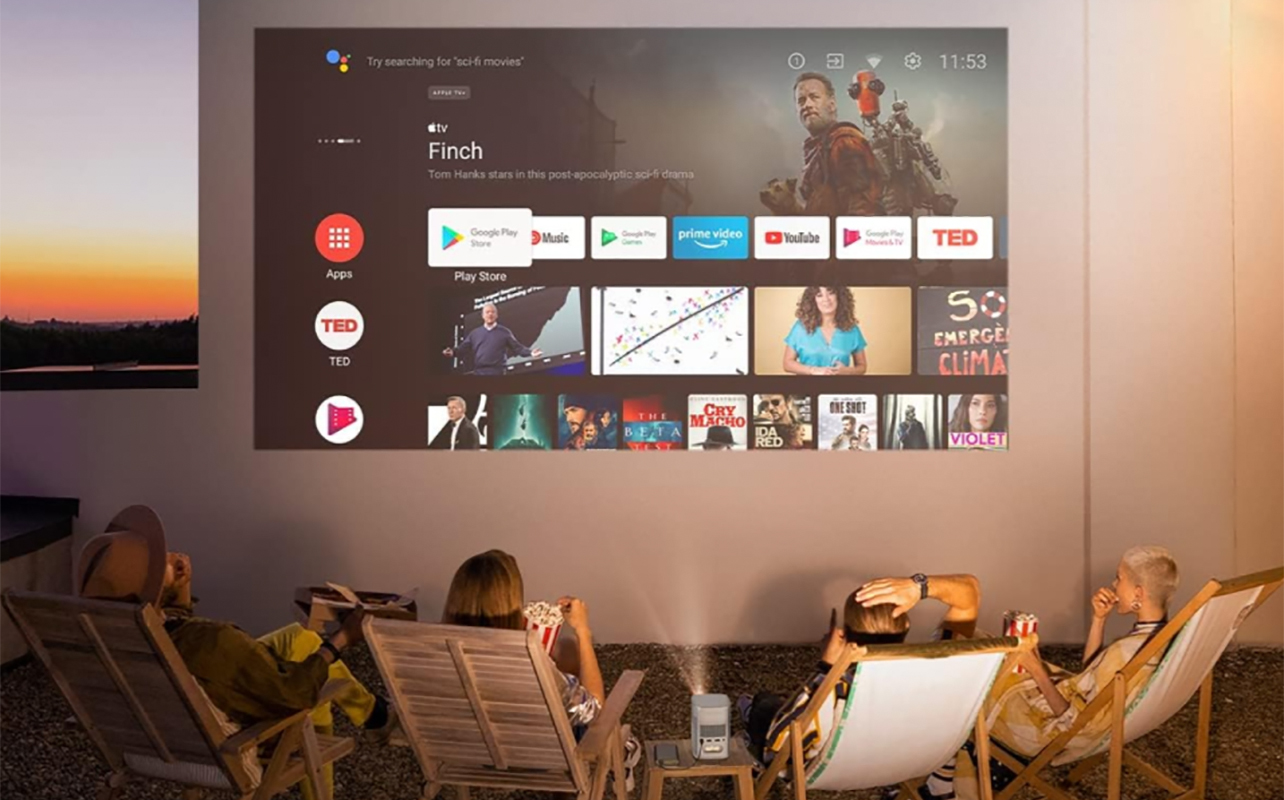
When you shop for a projector, you’ll notice brightness specs listed in lumens, ANSI lumens, or sometimes LED lumens. Knowing the difference matters because your choice will directly affect how sharp and vibrant your projected image looks.
What are ANSI lumens?
ANSI lumens are measured using a standardized process from the American National Standards Institute. The test involves projecting an image under controlled conditions. This is typically a fixed screen size (often 60 to 100 inches) with specific room lighting levels that mimic a dimly lit space. Then, brightness readings are taken from nine different points across the projected image. These readings are averaged to get the final ANSI lumen rating.
For example, if a projector produces 2,800 lumens in the middle of the image but only 2,200 lumens in the corners, the ANSI process averages these variations, giving you a more realistic “whole picture” brightness. This prevents a situation where a projector looks blindingly bright in a small hotspot but noticeably dull around the edges. It’s a bit like checking the lighting in every corner of a room before deciding whether it’s bright enough overall, rather than just standing under the brightest bulb.
What are lumens?
In general, lumens measure the total visible light emitted by a source. For projectors, this means the lamp or LED. But without ANSI’s standardized method, these numbers are inconsistent and often overstate what you’ll see on screen.
Many projectors advertise lumens (non-ANSI), also called LED lumens or light source lumens. These measure the raw light output from the lamp or LED before it passes through the projector’s optics. It’s like judging a flashlight’s brightness before you even turn it on. Technically, the number is impressive, but it’s not very useful for actual viewing. This is why a “10,000-lumen” budget projector might still look dim compared to a 2,500 ANSI lumen model.
If you take away one thing, it’s this: trust ANSI lumens for accurate, apples-to-apples comparisons among projectors.
What is colour brightness?
Another important piece of the puzzle is colour brightness. Some projectors have a high white brightness spec but a much lower colour brightness, which means colourful images can look dull or washed out. For vibrant, true-to-life visuals, especially for movies, sports, or gaming, you’ll want balanced white and colour brightness ratings.
Quick tip: If the manufacturer doesn’t list ANSI lumens, look for third-party reviews or testing data. This can give you a clearer sense of how the projector performs in real-world conditions.
Choosing the best projector for your home? Read our projector buying guide.
How bright should your projector be?
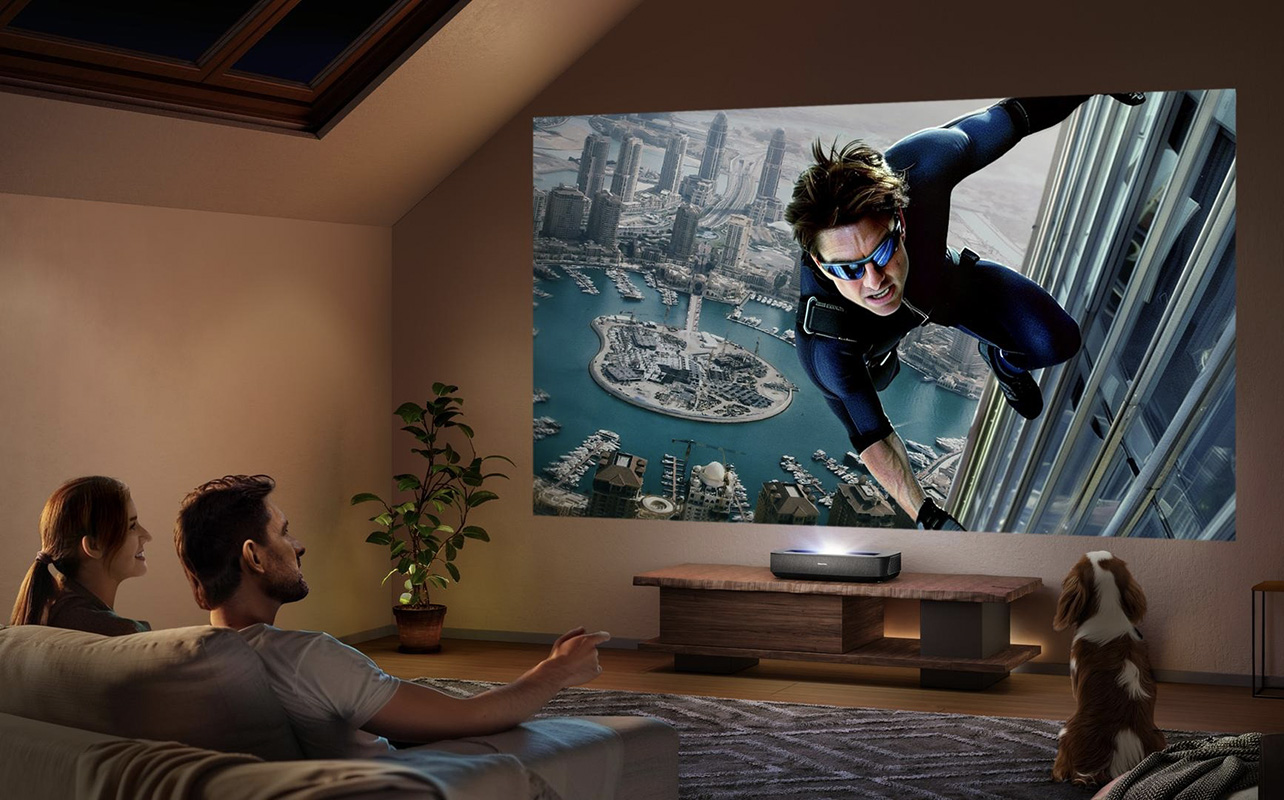
Here are general guidelines for different viewing environments, using ANSI lumens:
1,500–2,500 ANSI lumens
If you’re set up in a fully darkened room, like a basement home theatre with blackout curtains, you don’t need ultra-high brightness. In fact, too much can overpower dark scenes, cause glare, and lead to eye strain.
Picture settling into a recliner for movie night, popcorn in hand, with the only light coming from the projector. In this environment, even an 1,800 ANSI lumen projector can create rich blacks, crisp details, and vibrant colours without washing out the image. This is the sweet spot for cinephiles who prefer a cinema-like experience at home.
2,500–3,500 ANSI lumens
In a living room or multipurpose space, some light will almost always be present, whether it’s sunlight filtering through curtains, lamps in the corner, or light from a nearby kitchen. This ambient light can wash out the image, so you’ll need a brighter projector to maintain contrast and detail.
Imagine watching a Saturday afternoon hockey game with friends, sunlight streaming in through your patio doors. A 3,000 ANSI lumen projector keeps the rink’s bright whites looking crisp and the jerseys vibrant, even with daylight spilling in. This range is also great for casual TV viewing in spaces where the lights aren’t fully dimmed.
3,000–4,500+ ANSI lumens
Outdoors at night might seem dark enough, but you’re still competing with ambient light from streetlamps, porch lights, even car headlights passing by. Higher brightness ensures your movie stays vivid and clear even when the environment isn’t pitch-black.
If you’re hosting a summer backyard movie night with neighbours and your screen is set up near the fence, a streetlight across the road can cast a faint glow on your screen. With 3,500–4,500 ANSI lumens, the image remains punchy, colours stay bold, and shadows stay defined so you don’t lose the magic of the moment.
4,500+ ANSI lumens
Daylight is the ultimate test for any projector. The sun’s natural brightness easily overwhelms projected images, so maximum brightness is essential.
Think about giving a presentation at a company picnic under a tent at noon or streaming a soccer match in your backyard during the day. Even with shade, sunlight bouncing off the ground and surroundings can dull the picture. An at least 4,500 ANSI lumen projector can cut through much of that glare, giving you a watchable image, though direct sunlight will still be a challenge for any model.
Outdoor projector brightness: what you need
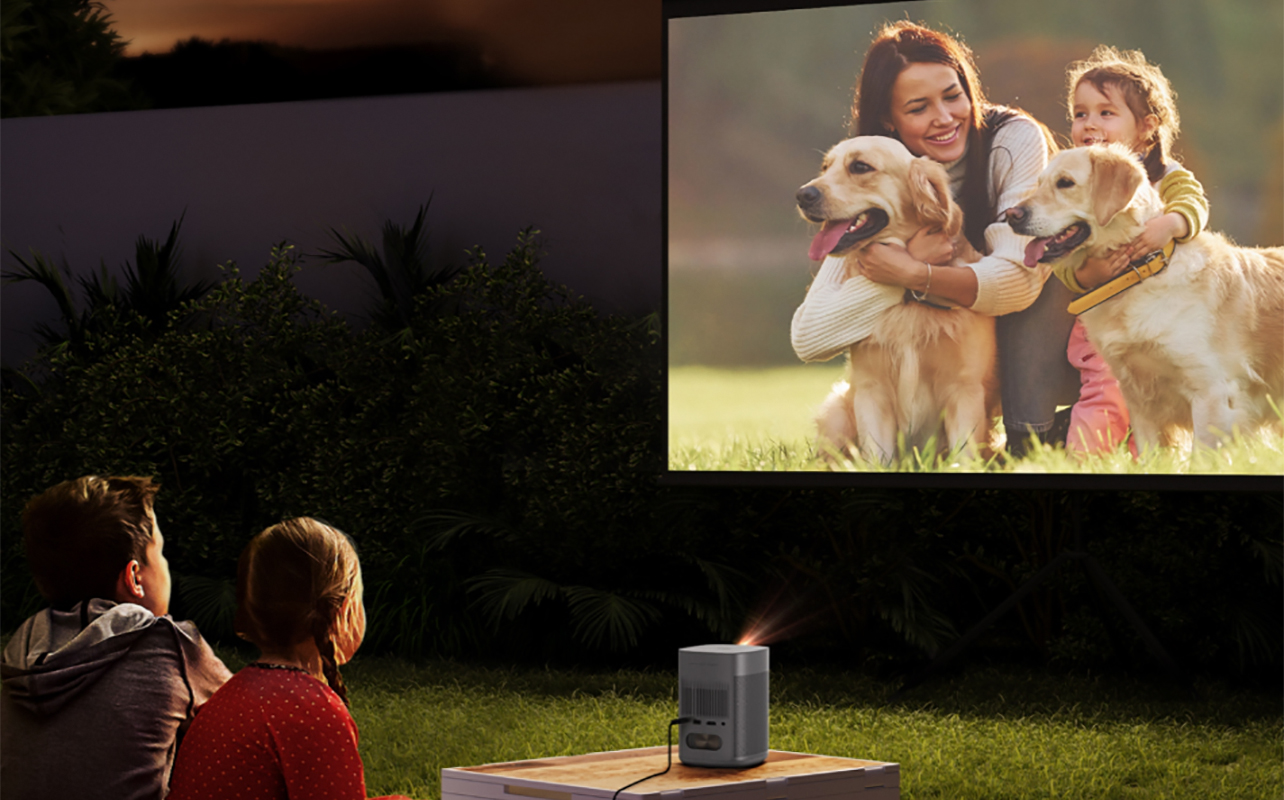
Brightness matters most outdoors, where you can’t control every source of light. Even if you start a movie at dusk, you may still compete with streetlights, porch lights, and the last of the evening sun.
- For dusk or nighttime viewing, aim for at least 3,000 ANSI lumens. If you want more flexibility and a punchier image, especially for larger screens, go for 3,500–4,500 ANSI lumens.
- For daytime or bright daylight, you’ll need 4,500+ ANSI lumens, and even then, direct sun will be challenging. In all cases, it’s wise to add 500–1,000 lumens above your calculated need to handle unexpected light sources, bigger screens, or less-than-perfect placement.
Other factors that affect perceived brightness
Brightness specs are only part of the story. Even if you nail the perfect lumen rating, other factors can dramatically change how bright the picture looks.
- Screen type: Screens have a “gain” rating, which measures how much they reflect light. A high-gain screen can make an image appear brighter, though it may narrow the viewing angle.
- Ambient light control: Indoors, curtains, blackout shades, or even darker wall paint can improve perceived brightness by reducing stray light. Outdoors, try to set up away from streetlights or reflective surfaces.
- Projector maintenance: Dusty filters and aging bulbs can reduce light output. Cleaning your projector regularly and replacing lamps when needed helps maintain peak brightness.
- Image settings: Many projectors have eco-modes that dim brightness to save lamp life. While this can be useful for dark rooms, switch to full power when you need extra punch. Contrast and sharpness settings can also impact how bright the image feels.
Getting a projector? Find the right lumen level
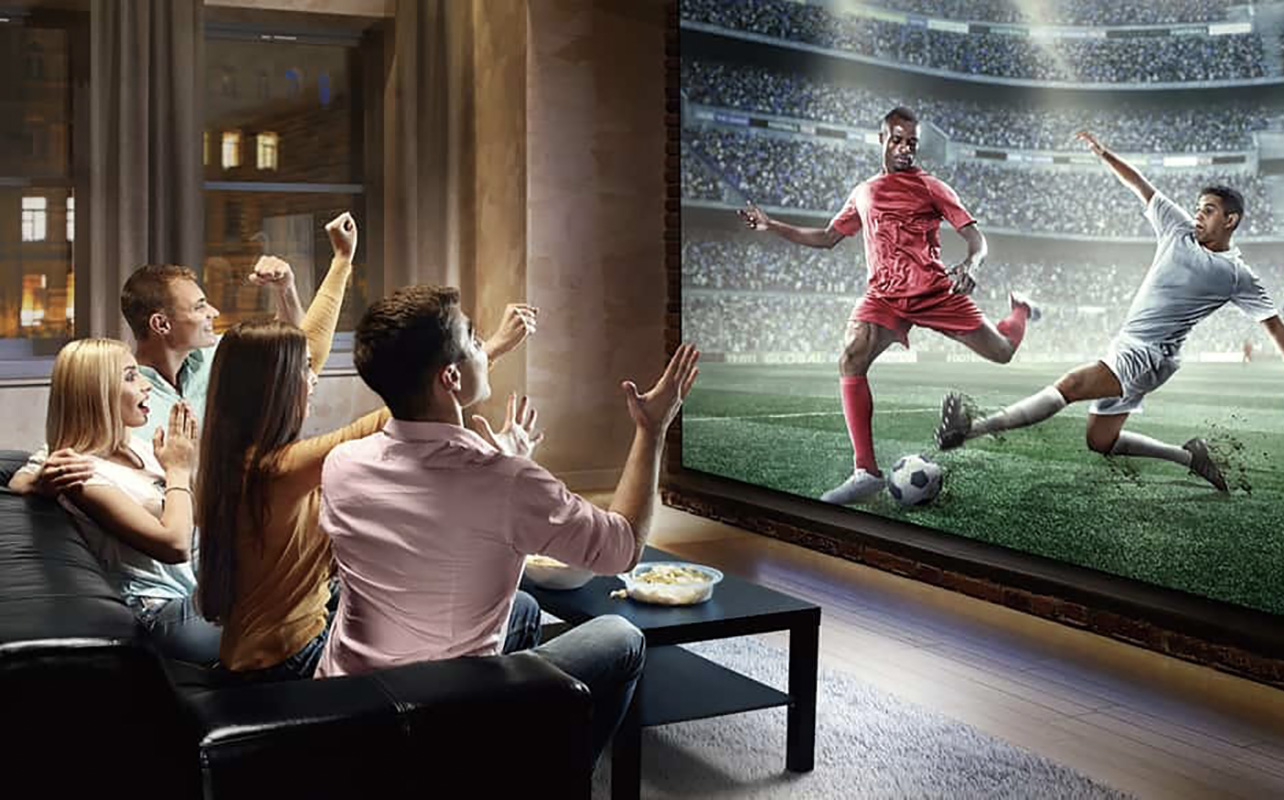
If you want the best lumens for projector performance in your space, follow these three rules:
- Trust ANSI lumens over marketing lumens for true comparisons.
- Match your brightness to your environment, whether that’s a dark basement theatre, a bright living room, or a backyard movie night.
- Account for extras like screen gain, ambient light, and projector maintenance. They all impact how bright your picture looks.
If you’re ready to upgrade your setup, check out our wide selection of projectors at Best Buy Canada. You can filter by brightness level to find models that meet your needs, whether that’s projector lumens for daylight, the ideal lumens for outdoor projector use, or a balanced indoor option for movie marathons.
This article was drafted using AI technology and then reviewed, fact-checked, and revised by a member of our editorial team.





